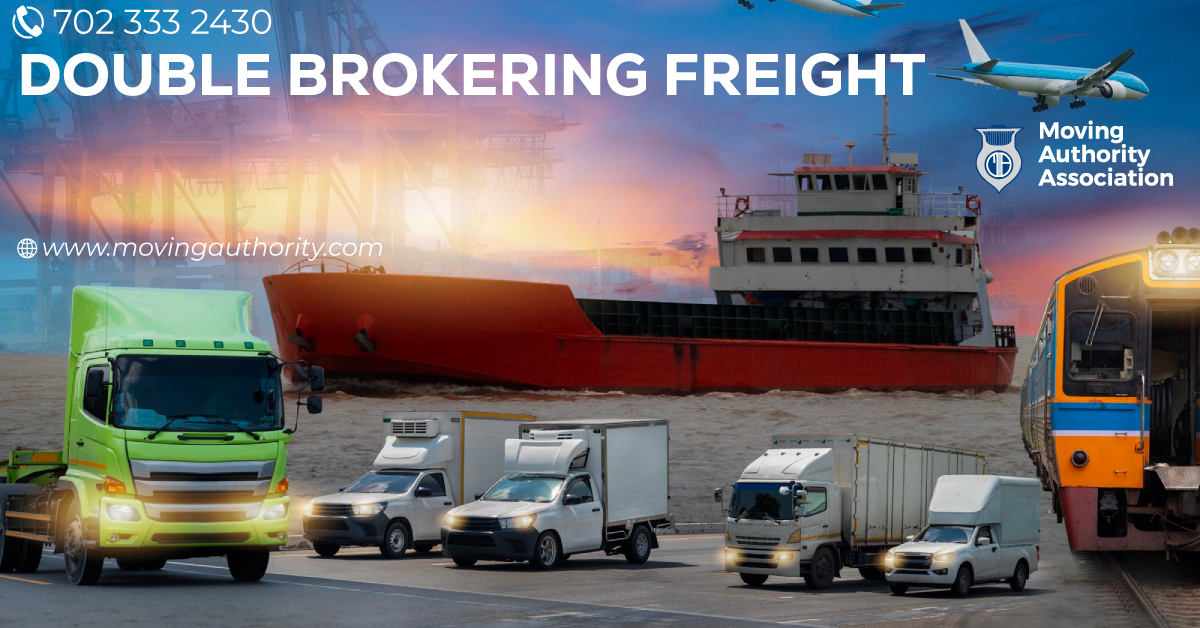
Driving Dreams, Launching And Thriving In The World Of Small Trucking Business
Welcome to "Driving Dreams: Launching and Thriving in the Small Trucking Business." In this guide, we'll explore the essential steps and valuable insights for building a successful small trucking business. Learn more about Starting a Trucking Company. Whether you're a passionate entrepreneur or an experienced trucking professional, this guide will guide you toward achieving your goals.
We'll talk about the trucking industry, understanding its current state, key trends, and promising opportunities. We'll help you conduct thorough market research and feasibility analysis to make informed decisions.
Creating a solid business plan is crucial; we'll cover the important elements. We'll also guide you through securing licenses, permits, and insurance to ensure legal compliance and protect your investment.
Building a reliable network is essential for success, and we'll explore strategies for establishing relationships with shippers and freight brokers, leveraging online platforms, and maximizing your opportunities. Know more about Starting A Trucking Company Cost.
Throughout our journey, we'll address important aspects such as regulatory compliance, technology and data utilization, financial management, safety, and staying updated with industry changes.
Together, we'll equip you with the knowledge and tools to navigate the challenges and accelerate toward success in the small trucking business. Let's hit the road and drive your dreams forward!
Understanding The Trucking Industry
The trucking industry is a vital component of the global economy, responsible for transporting goods across vast distances. Do you Want to know the BOC-3 Filing? To navigate this dynamic landscape, it's essential to grasp its current state, key trends, and market dynamics. Here's a brief overview:
The trucking industry continues to play an essential role in the movement of goods, contributing to economic growth and supply chain efficiency. Starting A Trucking Company Successfully. It faces challenges such as driver shortages, fluctuating fuel prices, and regulatory changes. However, it remains a resilient and essential industry that adapts to evolving demands and embraces technological advancements.
Several trends shape the trucking industry. E-commerce growth has increased the demand for last-mile and expedited deliveries. Sustainability and environmental concerns are driving the adoption of alternative fuels and green technologies. Learn more about Biennial Update. Automation and digitization are revolutionizing operations through innovations like autonomous vehicles and advanced logistics software. Additionally, there is a growing emphasis on safety, driver well-being, and compliance with regulations.
Within the trucking industry, it's essential to identify target markets and niche opportunities. This involves understanding customer needs, high-demand geographical regions, and specific industry sectors requiring specialized transportation services. Niche opportunities can arise from serving niche markets, such as temperature-controlled goods, hazardous materials, or oversized freight. By identifying and targeting these segments, businesses can carve out a competitive advantage and capitalize on untapped potential.
By comprehensively understanding the trucking industry's current state, trends, and market dynamics, you can make informed decisions, adapt to changes, and identify lucrative target markets and niche opportunities. Read more about the Broker Freight Package. This knowledge will position you for success in this ever-evolving sector.
Conducting Market Research and Feasibility Analysis
Before launching a trucking business, conducting thorough market research and feasibility analysis is crucial.
It's essential to gather industry data and statistics to make informed decisions. This includes researching market size, growth trends, and industry forecasts. BOC-3 Filling For Trucking Business. Additionally, analyzing factors such as freight volumes, regional demand, and emerging markets can provide valuable insights into the potential opportunities and challenges within the trucking industry.
Understanding market demand and competition is vital. Assessing customer needs, identifying target markets, and evaluating the competitive landscape will help you position your business effectively. Analyze customer preferences, transportation routes, and the services offered by competitors. This analysis will enable you to differentiate your business, identify unique selling points, and develop strategies to attract and retain customers.
Evaluating the financial feasibility and profitability of your trucking business is essential. Calculate your startup costs, including vehicle acquisition, maintenance, insurance, fuel expenses, and licensing fees. Do you want to know Broker Mover Package information? Consider operating costs such as driver salaries, repairs, and administrative expenses. Conducting a thorough financial analysis will help you determine pricing strategies, revenue projections, and the breakeven point. It will also give you a realistic understanding of the profitability potential of your venture.
By conducting market research and feasibility analysis, you can make informed decisions, identify market opportunities, understand your competition, and assess the financial viability of your trucking business. This knowledge will provide a strong foundation for developing effective business strategies and increasing your chances of long-term success in the industry.
Developing a Solid Business Plan
A comprehensive business plan serves as a roadmap for your trucking business. It should include essential elements such as an executive summary, company description, market analysis, organizational structure, and a clear outline of your products or services. Include details about your target market, competitive analysis, marketing and sales strategies, and a comprehensive financial plan. Each element provides a crucial foundation for your business's success and ensures that you have a holistic and well-rounded plan in place.
Defining your business goals and objectives is essential for driving your trucking business forward. Establish both short-term and long-term goals that are specific, measurable, achievable, relevant, and time-bound (SMART goals). Do you want to know CA Number? Whether you aim to expand your fleet, increase market share, or improve operational efficiency, clearly articulating your objectives will guide your decision-making and help track your progress as you achieve your vision.
Developing effective marketing, sales, and operations strategies is critical to your trucking business's success. Outline your marketing approach, including how to reach and attract customers, build brand awareness, and differentiate yourself from competitors. Define your sales strategies, such as identifying target customers, developing customer acquisition tactics, and maintaining strong customer relationships. Additionally, outlines operational strategies that cover areas like fleet management, driver recruitment and retention, safety protocols, and customer service standards.
Financial projections and budgeting are vital components of your business plan. This includes estimating revenue streams, projecting expenses, and conducting a break-even analysis. Create a realistic budget encompassing start-up costs, monthly expenses, and contingency funds. Visit & know about Trucking Paperwork. Consider fuel costs, maintenance, insurance, payroll, and administrative expenses. Accurate financial projections will help you make informed decisions, secure financing if needed, and ensure that your business is financially sustainable and profitable in the long run.
Securing Necessary Licenses and Permits
Securing the necessary licenses and permits is critical in establishing a legal and compliant trucking business. Familiarize yourself with the specific licensing and permitting requirements in your jurisdiction. Know what a is a Carrier Agreement. This includes understanding the types of licenses and permits needed to operate, such as motor carrier authority, International Fuel Tax Agreement (IFTA) permits, and Unified Carrier Registration (UCR). Having a clear overview of the requirements ensures that your business operates within the legal framework.
Obtaining a commercial driver's license (CDL) is essential to operate commercial vehicles, including semi-trucks legally. CDL requirements vary depending on the type of vehicle you intend to drive and the cargo you plan to transport. Research your jurisdiction's specific CDL classifications, endorsements, and testing requirements. Complete the necessary training and pass the required examinations to obtain your CDL. Complying with CDL regulations ensures you have the skills and qualifications to operate safely on the roads.
Registering with regulatory bodies, such as the Department of Transportation (DOT), is crucial in the trucking industry. The DOT requires motor carriers to register their business and obtain a unique USDOT number. Read more about the Claims Package. This number is used to track safety and compliance information. Additionally, depending on the nature of your operations, you may need to register with specific regulatory bodies such as the Federal Motor Carrier Safety Administration (FMCSA) or state transportation authorities. Adhering to these registration requirements ensures that you operate within the legal framework and comply with safety regulations.
You may need additional permits if you plan to engage in interstate or international transportation. Interstate transportation typically requires obtaining an interstate operating authority, commonly known as an MC number. Owning A Trucking Company Without Driving. This permit grants the authority to transport goods across state lines. You may need permits such as the Canadian authorities' Canadian-Motor Carrier (CMC) or the Mexican authorities' Mexico-Domiciled Motor Carrier (MX) permit for international transportation. Understanding and obtaining the necessary permits for interstate or international operations is vital for conducting legal and compliant transportation services.
Securing the necessary licenses and permits ensures that your trucking business operates within the legal framework, maintains compliance with safety regulations, and operates efficiently across state lines or international borders. Learn more about DOT Number Deactivation. Familiarize yourself with the requirements, complete the necessary applications, and stay current with regulatory changes to ensure a smooth and legally compliant operation.
Establishing a Legal Entity and Insurance
When establishing a trucking business, choosing the right legal structure is essential. Options such as a sole proprietorship, partnership, limited liability company (LLC), or corporation offer different benefits and protections. Consider consulting with a legal professional or business advisor to determine the most suitable structure for your circumstances. The chosen legal structure will impact personal liability, taxation, and your business's overall management and growth.
After selecting a legal structure, register your trucking business with the appropriate authorities. This typically involves registering your business name, obtaining a federal employer identification number (EIN) from the Internal Revenue Service (IRS), and complying with state and local registration requirements. Proper registration ensures that the government recognizes your business and enables you to operate legally and access various business services.
Insurance coverage is crucial for protecting your trucking business from potential risks. Adequate insurance coverage, including commercial truck, general liability, and cargo insurance, should be obtained. Commercial truck insurance protects your vehicles from accidents and damage, while general liability insurance covers potential third-party claims. Do you want to know Dot Authority? Cargo insurance protects the goods you transport. Comprehensive insurance coverage mitigates financial risks and safeguards your business from potential liabilities, ensuring the continuity of your operations.
Establishing a legal entity and obtaining insurance coverage is critical to protecting your trucking business. The chosen legal structure determines your personal liability, while proper registration ensures compliance with legal obligations. Insurance coverage provides financial protection against accidents, liabilities, and cargo damage. Addressing these aspects creates a solid foundation for your trucking business and protects your investment from potential risks.
Acquiring and Managing Equipment
When acquiring equipment for your trucking business, it's important to identify trucks and trailers that meet your specific needs. Consider factors such as payload capacity, fuel efficiency, and compatibility with the types of goods you plan to transport. Evaluate the durability, reliability, and safety features of the equipment. By choosing suitable trucks and trailers, you can optimize your operations and ensure efficient transportation of goods.
Acquiring trucks and trailers often requires significant financial investment. Explore different financing options available to you, such as loans, leasing, or financing programs offered by manufacturers or dealerships. Learn more about Movers Association Membership. Consider factors such as interest rates, repayment terms, and financial capabilities. You can acquire the necessary equipment by securing appropriate financing while managing your cash flow effectively.
Proper maintenance and timely repairs are crucial to keep your equipment in optimal condition. Establish a proactive maintenance schedule for routine inspections, fluid changes, and tire rotations. Regularly monitor and address any potential issues to prevent costly breakdowns or accidents. Additionally, consider establishing relationships with reputable repair shops or technicians who specialize in commercial vehicles. By prioritizing maintenance and repair, you can maximize the lifespan and performance of your equipment.
Effective fleet management is essential for the smooth operation of your trucking business. Implement strategies to track vehicle usage, fuel consumption, and driver performance. Utilize fleet management software or telematics systems to monitor routes, optimize dispatching, and ensure regulatory compliance. Implement driver training programs to promote safe driving practices and fuel-efficient behaviors. Know Published Tariff information. You can enhance operational efficiency, reduce costs, and improve overall performance by implementing sound fleet management strategies.
Acquiring and managing equipment is critical to running a successful trucking business. By identifying suitable trucks and trailers, exploring financing options, prioritizing maintenance and repairs, and implementing effective fleet management strategies, you can ensure that your equipment is reliable, well-maintained, and contributes to the overall success of your business.
Building a Reliable Network
Establishing strong relationships with shippers and freight brokers is essential for a reliable network. Connect with shippers who require transportation services and build trust by delivering goods on time and with care. Network with freight brokers who act as intermediaries, connecting carriers with shippers. You can secure consistent loads and expand your customer base by fostering these relationships.
Negotiating contracts and rates is a crucial aspect of building a reliable network. When engaging with shippers or freight brokers, discuss and agree upon terms that align with your business objectives. Negotiate fair rates considering your costs, such as fuel, maintenance, and labor. Building mutually beneficial agreements ensures transparency, profitability, and long-term partnerships.
Online load boards and freight marketplaces provide valuable opportunities for finding available loads and connecting with potential partners. These platforms allow carriers to browse and bid on loads posted by shippers or brokers. Utilize these online resources to expand your network, secure additional business, and optimize your trucking operations.
Collaborating and forming partnerships with other trucking businesses can create a reliable network. Consider forming alliances with carriers specializing in different services or having complementary geographic coverage. Do you want to know about the Drug and Alcohol Program? By partnering with other trucking businesses, you can share resources, leverage each other's expertise, and handle larger projects or contracts together. Cultivating these partnerships strengthens your network and enhances your ability to meet customer demands effectively.
Building a reliable network involves developing relationships with shippers and freight brokers, negotiating contracts and rates, leveraging online platforms, and cultivating partnerships with other trucking businesses. By actively engaging in these activities, you can establish a strong network that provides consistent loads, fosters trust, and contributes to the long-term success of your trucking business.
Navigating Regulatory Compliance
Understanding safety regulations and compliance requirements:
Compliance with safety regulations is crucial in the trucking industry. Familiarize yourself with the safety regulations and compliance requirements set forth by regulatory bodies such as the Department of Transportation (DOT) and the Federal Motor Carrier Safety Administration (FMCSA). These regulations cover driver qualifications, vehicle maintenance, cargo securement, and safety protocols. By understanding and adhering to these regulations, you can ensure the safety of your operations and maintain compliance with the law.
Driver qualification and training programs:
Driver qualification is a vital aspect of regulatory compliance. Ensure that all drivers in your fleet meet the necessary qualifications, including possessing a valid commercial driver's license (CDL) and complying with medical certification requirements. Implement comprehensive training programs covering safe driving practices, defensive driving techniques, and regulatory compliance. Regularly evaluate and document driver performance to ensure ongoing compliance and promote a safety culture within your organization.
Hours of Service (HOS) regulations and electronic logging devices (ELDs):
Hours of Service (HOS) regulations govern the amount of time drivers can spend on duty and behind the wheel. Familiarize yourself with these regulations and ensure drivers adhere to the specified limitations to prevent fatigue-related accidents and maintain compliance. Implement electronic logging devices (ELDs) to record driver hours and monitor compliance with HOS regulations accurately. ELDs provide automated and accurate tracking, reducing paperwork and ensuring accurate reporting of driver hours.
Vehicle inspections and maintenance protocols:
Regular vehicle inspections and maintenance are essential for both safety and regulatory compliance. Implement thorough inspection protocols for pre-trip and post-trip checks to identify any mechanical issues or safety concerns. Schedule routine maintenance to address repairs, fluid changes, and equipment updates. Learn about Hotshot Authority information. Document all inspections and maintenance activities to demonstrate compliance with regulations and provide evidence of proactive safety measures. Proper vehicle maintenance not only ensures compliance but also extends the lifespan and performance of your fleet.
Navigating regulatory compliance involves understanding safety regulations, ensuring driver qualification and training, adhering to Hours of Service (HOS) regulations with the help of electronic logging devices (ELDs), and implementing vehicle inspections and maintenance protocols. By prioritizing compliance, you create a safer work environment, mitigate legal risks, and maintain a positive reputation within the trucking industry.
Using Technology and Data
Transportation management systems (TMS) and fleet tracking:
Transportation management systems (TMS) and tracking technologies can streamline trucking operations. TMS software helps manage various aspects, including load scheduling, dispatching, and routing. Fleet tracking systems use GPS technology to monitor vehicle locations, track deliveries, and improve overall fleet efficiency. By implementing these technologies, you can optimize logistics, enhance communication, and gain real-time visibility into your operations.
Optimizing route planning and fuel efficiency:
Technology can play a significant role in optimizing route planning and improving fuel efficiency. Utilize route optimization software that considers factors like traffic patterns, delivery windows, and fuel costs. Selecting the most efficient routes can minimize mileage, reduce fuel consumption, and improve on-time delivery performance. This not only saves costs but also reduces environmental impact.
Utilizing data analytics for performance evaluation:
Data analytics provides valuable insights into your trucking business's performance. Utilize data analytics tools to track key performance indicators (KPIs) such as delivery times, driver productivity, and fuel consumption. Analyzing this data helps identify trends, strengths, and areas for improvement. By leveraging data analytics, you can make data-driven decisions, enhance operational efficiency, and continuously improve your business performance.
Incorporating emerging technologies (e.g., autonomous vehicles):
Embracing emerging technologies like autonomous vehicles can revolutionize the trucking industry. While autonomous vehicles are still in development, they have the potential to transform operations, enhance safety, and increase efficiency. Stay informed about advancements in autonomous technology and assess how it may impact your business in the future. By focusing on emerging technologies, you can position your trucking business to adapt and take advantage of new opportunities.
Using technology and data in the trucking industry can optimize operations, improve efficiency, and drive innovation. Implement transportation management systems (TMS) and fleet tracking to streamline processes. Leverage technology to optimize routes and fuel efficiency, utilizing data analytics for performance evaluation. Stay informed about emerging technologies that may shape the industry in the future. Using technology and data, you can stay competitive, meet customer expectations, and pave the way for future success.
Managing Financials and Cash Flow
Effective budgeting and financial management practices are essential for the success of your trucking business. Develop a budget that outlines your projected income and expenses. Regularly review and adjust your budget as needed to ensure financial stability. Implement financial management practices such as tracking income and expenses, maintaining organized financial records, and conducting regular financial analyses. By adopting these best practices, you can make informed financial decisions and maintain control. Over your business's financial health.
Developing appropriate pricing strategies and negotiating rates is crucial for profitability. Determine your costs, including fuel, maintenance, insurance, and labor, and factor them into your pricing structure. Research industry standards and competitors' rates to ensure your pricing is competitive and reflective of the value you provide. Negotiate rates with shippers and freight brokers to secure fair compensation for your services. Effective pricing strategies and rate negotiation ensure your business remains financially viable and competitive.
Monitoring expenses and revenue streams are essential for understanding your business's financial performance. Know what the is MC Number. Regularly track and analyze your expenses to identify areas for cost-saving opportunities. Monitor your revenue streams to ensure consistent cash flow and identify potential areas for growth. By closely monitoring expenses and revenue, you can make informed decisions, identify trends, and take proactive steps to improve your financial situation.
Effective cash flow management and contingency planning are vital for financial stability. Maintain a positive cash flow by closely monitoring accounts receivable and accounts payable. Implement strategies to improve collection times and manage payment terms with clients and suppliers. Establish a contingency plan to address unexpected financial challenges, such as delayed payments or emergency repairs. By managing cash flow effectively and having contingency plans in place, you can navigate financial uncertainties and maintain the financial health of your trucking business.
Managing financials and cash flow requires budgeting, implementing best financial management practices, employing appropriate pricing strategies and rate negotiation, monitoring expenses and revenue streams, and practicing effective cash flow management and contingency planning. By adopting these practices, you can ensure your trucking business's financial stability and long-term success.





